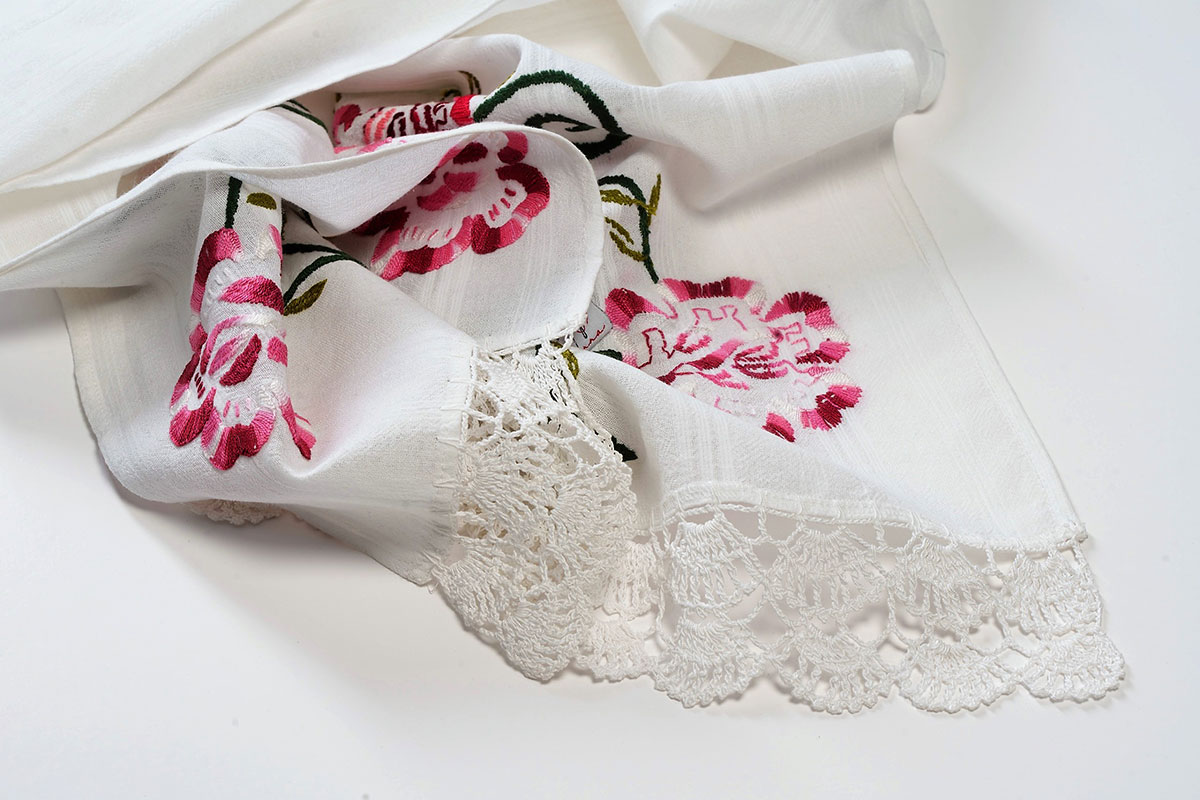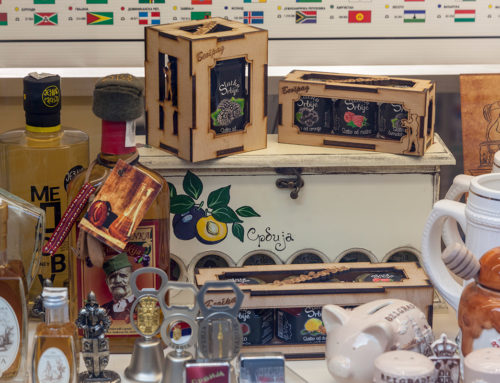What to take with you from Serbia
In each issue, we reveal different “made-in-Serbia” precious things to you – souvenirs, gifts or, yet, small personal delights produced by domestic entrepreneurs. Because good traditions should not be stopped and because we should all support domestic producers more than ever this year, a nice local story of Nonna Handmade is also told in this issue.
Nonna Handmade is a small realm of handicrafts made by the joint skill of the four pairs of hands, i.e. the four generations of one family. It may initially confuse you, but it is a never-ending game. A multitude of details, ornaments, lines, shapes and colors on a traditional costume are an inexhaustible source in creating unrepeatable preliminary solutions to a modern suit. The Nonna ladies stylize ethno-motifs first of all in order to continue to embroider the family thread and also to preserve from oblivion the profusion of our intangible cultural heritage. We spoke with Slađana Milojević, the authoress of the Nonna Handmade concept, about how they decided to do it exactly that way.
Given that this is a story developing through the four generations, we assume Nonna handmade had worked even before it got that name.
Nonna originated as homage to our grandmother Milena, a famous embroideress and knitting-woman from Užice. Her head kerchief embroidered by her girlish hand adorns our showroom in Čumićevo Sokače. Our grandmother knitted and embroidered the most beautiful clothes to my sister and me, while our mother Ema sewed us beautiful dresses. Our grandfather Milinko was a famous tailor, on whose cuts Nonna Handmade still designs and sews the famous gaberdine or snapsuit, as well as men’s and women’s blouses and shirts.
What is it that inspires you?
We’re inspired by life, joy, the pride we take in the fact that Serbia has an inexhaustible heritage, whose beautiful motifs we modify with our professors and painters for the needs of our products. Apart from the Belgrade Ethnographic Museum, my daughter and I found an inspiration for the new collection even in the British Museum, where our traditional costumes are preserved.
How popular is ethno in Serbia? Who are Nonna’s most frequent buyers?
Our buyers are diplomats, businesspeople and our people living abroad, as well as our intellectuals and distinguished people of different professions. Commercially speaking, unfortunately, the largest number of people are still unaware of the significance of our ethnographic culture.
How complex is handmade work and how do handmade clothes essentially differ from “fast fashion”?
To have a handmade thing in your hands carries weight of itself. To be sitting for hours, sometimes even for days, as much as needed to produce one product of ours sounds incredible to many people in the fast digital world today; however, it is exactly the amount of the time needed to make a blouse, a belt, a tablecloth… We cut every single piece we produce by hand, and we also fabric-cover buttons as often as not. Nonna products are exclusively made of natural materials – cotton, flax and silk; when something is natural, you have to treat it with special care, since Nonna Handmade is a studio with a soul.
What of all can we find in Nonna’s wardrobe?
A blouse, a shirt, a dress, a gaberdine and a blazer. Of the additional assortment, there are hand-embroidered belts, small bags, and handmade gloves.
Is there a product that makes you recognizable?
Yes, it’s the blazer with the motif of the Belgrade middle-class clothes at the beginning of the 20th century, as well as the shirt with the motif of the climber plant of Oplenac. Of course, our buyers choose a flaxen table topper made in the Kosovo embroidery style very frequently.











Social Network